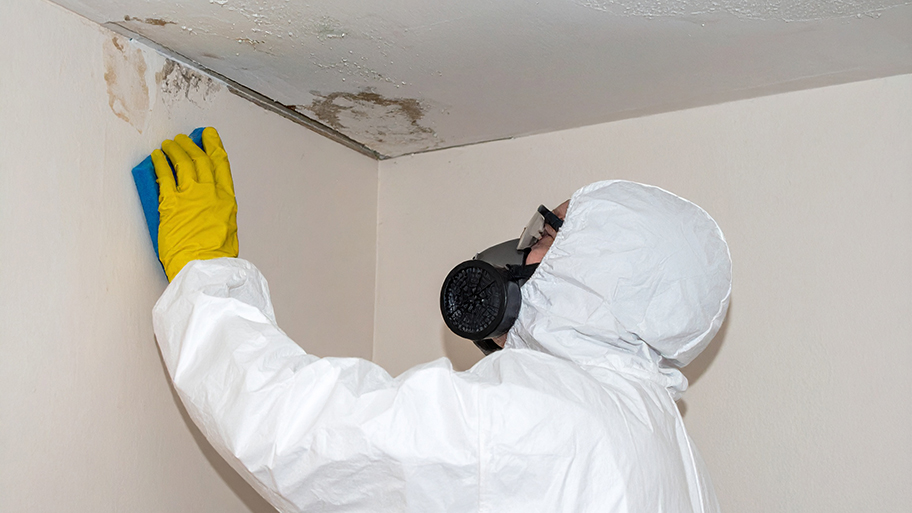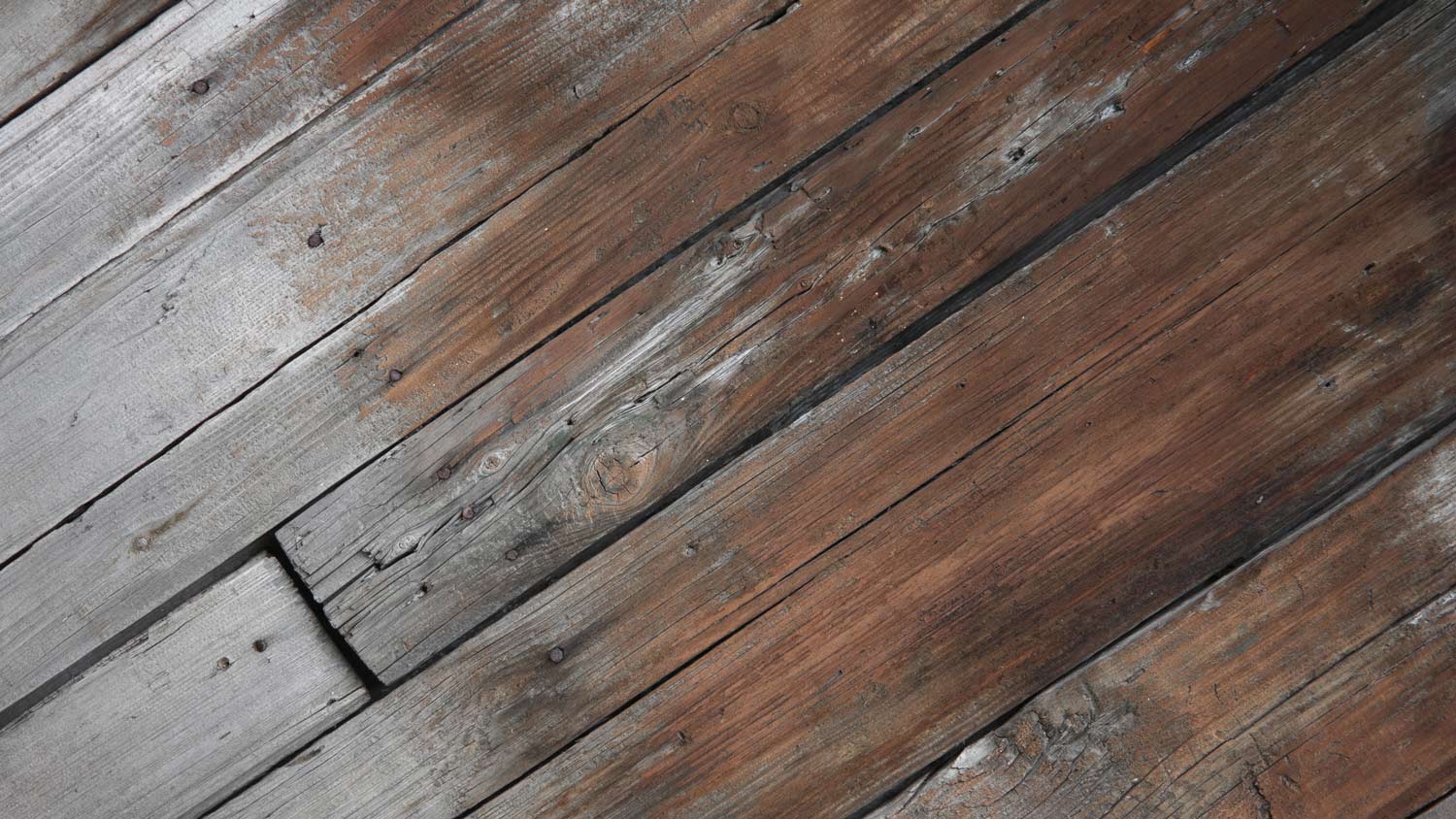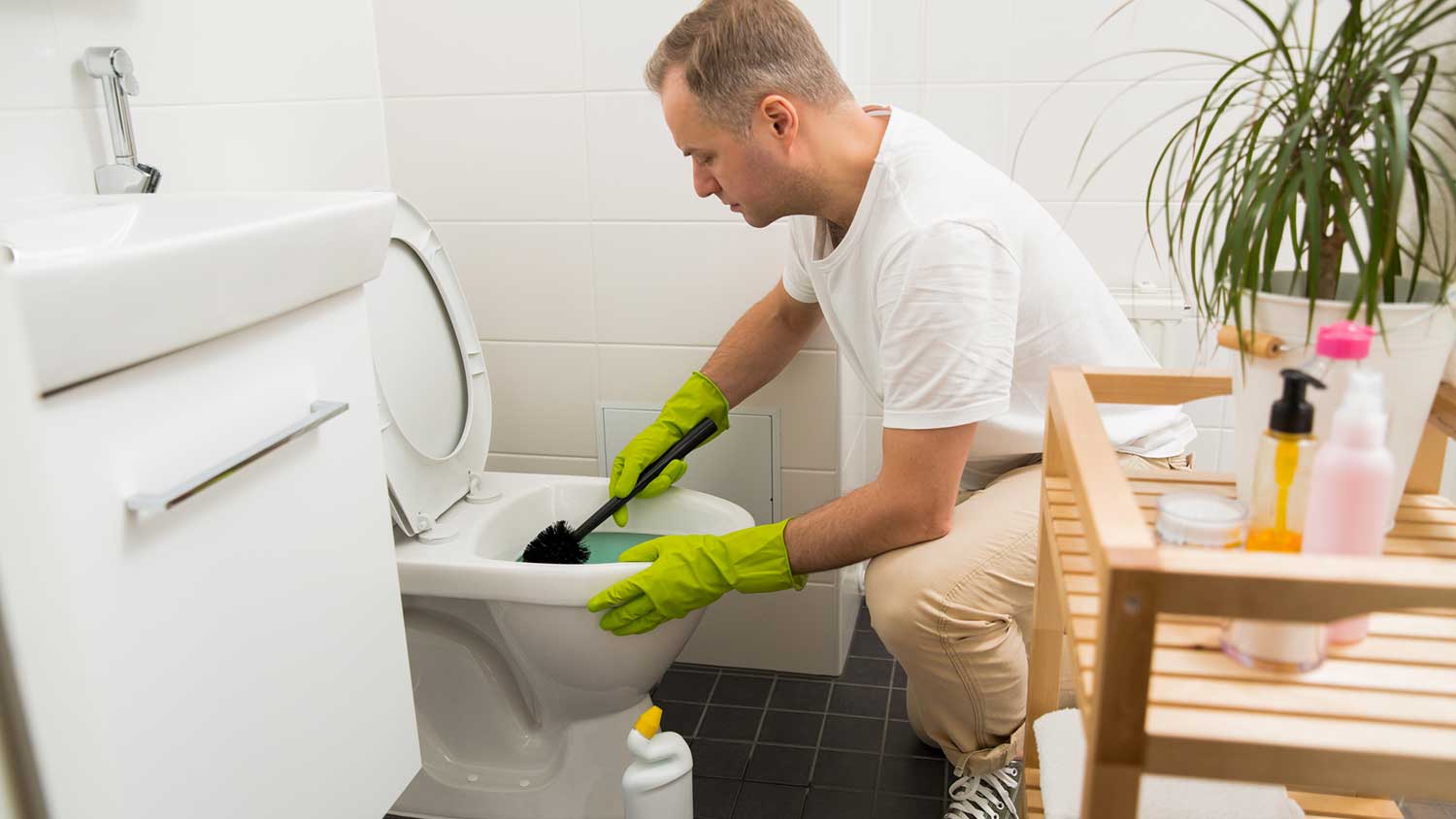
Mold remediation cost can quickly escalate. But if you have mold in your home, the cost for mold remediation is worth it.
Learn the classic signs of mold under hardwood floors to stop it from spreading


Prolonged moisture causes mold growth under hardwood floors.
A musty smell, humidity, and insect infestations are signs of mold.
Mold can cause discoloration and warping in hardwood floors.
Be aware of physical symptoms, such as nausea and fatigue.
Call a pro when the mold outbreak exceeds 10 square feet.
Hardwood floors add an elegant, timeless look to any room in your home. But they are also susceptible to mold and mildew growth. Learn more about the classic, revealing signs of mold under hardwood floors.

Typically, moisture is the root cause of any type of mold growth. Mold can fester any time your hardwood floors are exposed to excess moisture, such as during a water leak or even prolonged exposure to steam or humidity. Unlike other types of flooring, hardwood floors have more cracks and crevices for water to flow into, making them susceptible to mold growth. Hardwood floors tend to absorb and trap moisture, while vinyl and tile hold water, allowing it to pool.

Mold and mildew usually have a stale, musty smell, thanks to microbial volatile organic compounds (mVOCs). These compounds are gasses that are emitted into the air as the mold grows, which elicits this telltale stench. In all cases, it’s better to find out sooner rather than later to avoid mold damage. The good news? You might have caught the mold growth early if you smell it instead of seeing it. (Dark spots, fuzzy white patches, and discolored streaks are visual signs of mold growth.)
If you can smell the odor and you can’t see it, usually that is a sign of something more serious. Mold can hide behind your walls and floors and will require a professional mold remediation company to run indoor air quality tests.
Hardwood flooring is porous, allowing it to easily absorb the extra moisture caused by rising humidity levels. Flooring can trap moisture, creating a fruitful breeding ground for mold. Your home may seem more humid than usual for several reasons, ranging from your location’s climate to indoor airflow issues. But don’t rule out the possibility of mold under hardwood floors—especially if you’re noticing more condensation on mirrors, windows, and even your toilet base. In some cases, you might even notice that condensation is appearing on your floors.
There may be an underlying mold issue if you notice an influx of insects in your home. Some insects feed on mold and other decomposing matter, while others are attracted to the smell that mold emits. Keep an eye out for insects such as beetles, carpenter ants, cockroaches, and millipedes. Pinpointing a mold issue early on can prevent mold growth and curb a growing mold infestation.

Another sign of mold under hardwood floors can come in the form of texture changes, as well as crowning or cupped floorboards. Also, you might notice a spongy, squishy feeling when you walk across certain parts of the floor. When moisture gets trapped under the floorboards, it causes the planks to expand and contract, often at different rates. Mold can also cause texture changes in the wood. In some instances, mold growth can cause hardwood floors to become dusty, fuzzy, or powdery. If you see these changes in texture, don’t inspect the wood without first putting on gloves and a respirator mask.
Water stains and mold growth can cause discoloration in hardwood floors. Mold spores feed on the hardwood floor’s organic compounds. Mold spores produce stain-inducing pigments as the infestation grows. Typically, the wood will appear darker than usual. Take any stains or odd spots seriously, as they could be a sign of a mold outbreak underneath. This kind of damage, especially if it is widespread, can be a sign that you need mold remediation. A local pro will walk you through how to test for mold.
Flaking and peeling can be more than a cosmetic concern or normal wear and tear. Much like warping or buckling, flaking and/or peeling can be a sign of mold under hardwood floors. Moisture can gradually erode the wood’s finish and adhesive bonds between floors and the protective coating, resulting in damage. When refinishing the floor, consider a water-resistance sealer, which can help deter future mold growth.
As mold grows, mVOCs release into the air, creating a musty smell. This can irritate allergies or asthma, causing increased symptoms. The health effects of mVOCs are “largely unknown,” according to the U.S. Environmental Protection Agency (EPA). However, people exposed to mVOCs may have experienced the following:
Dizziness
Headaches
Nasal irritation
Fatigue
Nausea
Floods aren’t the only water exposure you need to be concerned about. Over time, untreated water damage from everyday life can cause mold and mildew to grow underneath hardwood flooring. This exposure can range from spillover from watering indoor plants to standing on a bare hardwood floor after a shower. Look for standing water in high-traffic areas. This could be a sign that the water is not absorbing, signaling a deeper issue that’s developed over time.
It’s best to get rid of mold as soon as possible, once you confirm an infestation. However, the EPA suggests taking the following steps to prevent mold growth in your home:
Fix leaks as soon as possible to avoid further damage.
Add mold inhibitors when painting interior walls.
Don’t paint or caulk moldy surfaces.
Increase ventilation throughout your home by using fans or opening windows to help the airflow and lower humidity.
Whenever mold is the question, there’s only one answer: moisture. This nuisance may form because of a leak that works its way from your roofing to your flooring, because of consistently high humidity levels, or because it’s in an area of your home that’s wetter in general. That’s also why you should avoid placing untreated wood in spots like your bathroom. The longer the moisture is allowed to sit and fester, the more likely mold is to form.
You’ll want to remove mold as soon as you see — or smell — it. Swift action will prevent mold and mildew from spreading throughout your hardwood floors. The EPA considers a mold outbreak under 10 square feet and localized to one area as DIY-able. Keep in mind: Mold is not always visual; trust your sense of smell and be alert for a stale, musty stench. It may be time to find professional assistance if you’re wondering, “Do I need a mold inspection?” If the area in question is larger than this or you’re simply not sure where it begins and ends, seek a local mold inspector for help. Mold inspection costs range from $300 to $1,000, and the typical mold remediation cost ranges from $1,125 to $3,345.
Great company to work with. I will definitely hire them again. They showed up on time and were very knowledgeable about what job they are doing. Great atmosphere in the store. They replaced an old pump with a new very quiet WhisperFlo multi-speed pump and got the heater running like new. Got...
2 electricians showed up but they didn't have a part so they said they would be back in a couple of hours. They did return & completed the task, there was some minor adjustments that needed to be made when they were finished, but tested the panel by plugging in the generator work completed.
Corey was our service tech. Great guy. He identified that a vent in the roof was leaking and perhaps with the recent rain, it caused a temporary short. He tested other components throughly. Having two units, I decided to take out a maintenance plan to ensure they are well serviced. Very...
They made an appointment, showed up promptly, and were very pleasant. Explained everything they were testing, and set up the test equipment to sample in three locations. True to their word, the levels returned were within normal ranges, and they provided me the full report on the results,...
had a wonderful compassionate test drive.
Tony came by and looked at the "job site", the ceramic tile I had purchased. Tony and his crew were back the next day. They put down plastic over my carpeting and got to work. Everything was done with two days. Tony was here at least three times checking on the status of the job. The...
Good economical method to provide security to your home. Anyone can install the equipment. They call every time I test the system. They also let me know in advance if something is not wrong. By far the best security system for the money.
From average costs to expert advice, get all the answers you need to get your job done.

Mold remediation cost can quickly escalate. But if you have mold in your home, the cost for mold remediation is worth it.

The cost of a mold inspection might seem high, but it’s one of the best investments you can make for your health and home. Read on to learn cost-saving tips.

Facing a pesky mold problem on your walls? Learn how to clean mold off drywall to freshen your home and keep spores away.

You’ve just opened your toilet to a slimy surprise, and now you’re wondering: Why is mold growing in my toilet? Here are the most common causes.

If you suspect you have mold under your vinyl flooring, you will need to work with a professional to replace it.

What does black mold look like? It has a dark color and may appear slightly fuzzy. Use this guide to learn about the variations in black mold’s appearance.